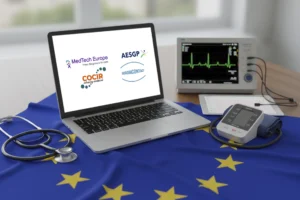On June 13, 2025, the U.S. Food and Drug Administration (FDA) issued a pivotal final rule reclassifying radiological computer-assisted detection and diagnosis (CADe/CADx) software from Class III (high risk) to Class II (moderate risk) with special controls. This regulatory update marks a significant shift in the oversight of these increasingly vital medical devices, reflecting the FDA’s evolving approach to balancing patient safety with innovation and market access. (Read the rule here)
Background and Context
Radiological CADe/CADx software plays a critical role in modern diagnostic imaging by assisting radiologists in detecting, localizing, and characterizing abnormalities such as fractures, lesions, and cancerous findings across modalities, including X-ray, CT, MRI, and ultrasound.
Historically, these software tools were regulated as Class III devices, subject to the most stringent premarket approval (PMA) requirements due to concerns about potential risks from false positives, false negatives, and diagnostic errors. However, after a proposal in 2018 and the issuance of this final order on June 13, 2025, the FDA reclassified it to Class II.
Advances in algorithmic transparency, validation methodologies, and clinical evidence have enabled the FDA to reconsider the risk profile of these devices. The agency’s decision to reclassify them as Class II reflects confidence that special controls, when combined with general controls, can adequately assure safety and effectiveness without the burdensome PMA pathway.
What Does Class II Classification Mean?
Class II designation indicates a moderate risk profile and requires manufacturers to comply with both:
General Controls: Basic regulatory requirements such as device registration, labeling, and adverse event reporting.
Special Controls: Device-specific regulatory requirements designed to mitigate risks unique to radiological CADe/CADx software.
Special controls for these devices include:
- Rigorous design verification and validation protocols, including detailed documentation of algorithms, input/output parameters, and performance limitations.
- Clinical performance testing demonstrating improved reader performance in the intended patient population.
- Comprehensive software documentation encompassing hazard analysis, cybersecurity safeguards, and traceability.
- Clear, detailed labeling specifying intended use, user instructions, limitations, and warnings to mitigate misuse or misinterpretation.
One important note for international manufacturers: Although Class II reclassification alters the regulatory framework, complying with the special controls continues to be demanding. In particular, demonstrating clinical performance with US-based physicians may remain a practical hurdle.
“The reader population must be comprised of the intended user population in terms of clinical training, certification, and years of experience.”
If you’re based outside the US, it’s important to plan early for partnerships or collaborations that can help you access the right data and clinical expertise.
Regulatory and Industry Implications
This reclassification is a strategic move by the FDA to streamline regulatory pathways for innovative software as a medical device (SaMD) products in radiology, fostering faster patient access while maintaining robust safety standards. Manufacturers can now pursue the 510(k) premarket notification route, demonstrating substantial equivalence to predicate devices, rather than undergoing the lengthy and costly PMA process.
For regulatory and MedTech professionals, this shift underscores the importance of:
- Developing comprehensive validation and verification strategies aligned with FDA special controls.
- Investing in cybersecurity and software quality assurance to meet heightened documentation expectations.
- Crafting precise labeling and user training materials to ensure appropriate clinical use.
Conclusion
The FDA’s June 2025 final rule that reclassifies radiological CADe/CADx software as a Class II device with special controls is an important step. It updates the regulatory approach to align with the software’s enhanced technology and its value in clinical care.
For MedTech innovators, regulatory experts, and cybersecurity specialists, this presents both an opportunity and a responsibility to align product development and compliance strategies with evolving FDA expectations, ultimately advancing patient care through safer, more accessible diagnostic tools.
Our team of regulatory experts and SaMD specialists stands ready to help you interpret, implement, and navigate these evolving requirements with precision and confidence. Whether you are developing new radiological software or updating existing products, partnering with seasoned experts ensures compliance, accelerates market entry, and ultimately enhances patient safety.
We invite you to engage with MedQAIR’s regulatory thought leaders.




